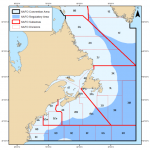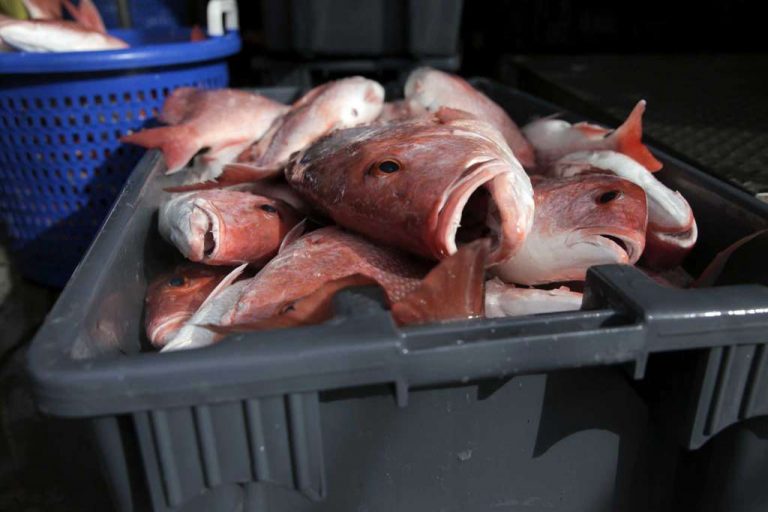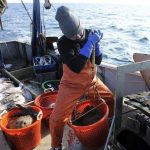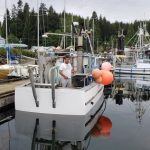Tag Archives: bureau-of-ocean-energy-management

Deepwater in Deep Trouble: Fishermen Tell Off-Shore Wind Farm Developers to F@*#K Off
Wind developers just ran aground off the New Jersey coast, with fishermen telling them to stick their wind turbines where the sun don’t shine. Gripped with a maniacal obsession with wind power, New York State, under Andrew Cuomo, is determined to wreck its once affordable and reliable power supplies, and much more, besides. It’s not as if New Yorkers are short of power. With tens of billions of dollars in subsidies up for grabs, RE rent-seekers have scoped out every last inch of territory in which they might get to spear a few more of these whirling wonders, and start harvesting those subsidies, in earnest. Like all forms of crony capitalism, the rent-seekers will do and say anything to win political favour. Building subsidised offshore wind turbines, is no exception. >click to read<07:56
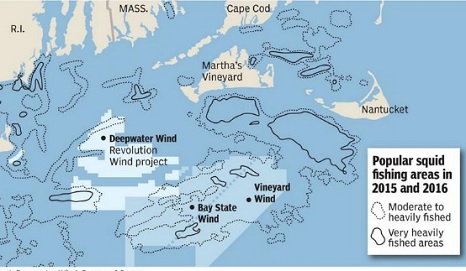
R.I. squid fishermen fear wind power
Rhode Island fishermen say a patch of the Atlantic Ocean south of Martha’s Vineyard is among the best places around to catch squid. They are also the same waters in which a developer selected by Massachusetts plans to install up to 100 giant wind turbines that would supply clean, renewable energy to the state. Now, Rhode Island coastal regulators and the state’s fishing community are raising concerns that the offshore wind farm that Vineyard Wind wants to build in 250 square miles of federally-owned ocean may affect access to the squid grounds that are critical to the Point Judith fleet. >click to read<09:13
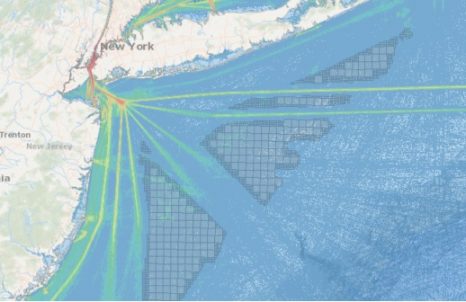
New York Bight – Interactive map shows where maritime industries, offshore wind could overlap
A new interactive map showing potential offshore wind energy areas in the New York Bight is now online to help mariners assess the potential impacts on their livelihoods, as federal officials gather information and comments this month. The Mid-Atlantic Regional Ocean Council (MARCO), an ocean planning partnership of state governments, posted the mapping tool Thursday. The base map shows the New York Bight “call area” where the federal Bureau of Ocean Energy Management is considering the possibility of offering future wind energy leases. (its bigger than Long Island) >click to read<
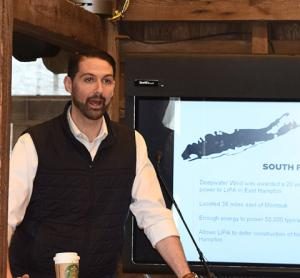
Bitter Denunciations at Marathon Meeting on Wind Farm
Opponents and advocates of the proposed South Fork Wind Farm, a 15-turbine, 90-megawatt installation planned approximately 30 miles east of Montauk, spoke for more than three hours at Tuesday’s meeting of the East Hampton Town Board, as commercial fishermen and their supporters railed at a project they fear would result in making fertile fishing grounds off limits.,,, “As a commercial fisherman, we are looking at the industrialization of our oceans,” said Dan Farnham Jr. of Montauk, referring to the hundreds or even thousands of turbines he expects to follow the South Fork Wind Farm. >click to read<20:19

Opponents say Block Island wind farm is causing problems across prime fishing grounds
The five enormous turbines that have been generating electricity off Block Island over the past year are considered a model for the future of offshore wind. But the nation’s first ocean-based wind farm also has exposed what fishermen say are serious threats to them caused by scattering massive metal shafts and snaking underwater cables across prime fishing grounds.,,, Wind power companies have dismissed most of their concerns, and fishermen have become increasingly frustrated, saying that they’re being ignored.>click to read<09:38

Zinke promises to ‘partner’ with oil industry, as offshore drilling opponents push back
Opponents of the Trump administration’s offshore drilling proposals pressed their case as a first 60-day public comment period drew to a close this week. Meanwhile Interior Secretary Ryan Zinke, speaking at a Houston energy industry conference Tuesday, talked up the offshore plan and other administration moves to streamline drilling and infrastructure permits. The Department of Interior, Zinke said, “should be in the business of being a partner” with industry. >click to read<10:11

Why the Trump offshore drilling plan is another Canada-U.S. complication
As much as half a million kilograms of haddock caught on the rich fishing grounds of Georges Bank this weekend will be landed in ports in southwestern Nova Scotia, as the winter fishery gets underway after a storm-delayed start to 2018.,,, Canada and the U.S. jointly manage fisheries on Georges Bank through various trans-boundary committees that agree on quotas, resource sharing and stock health. >click here to read<

Winds of worry: US fishermen fear forests of power turbines
East Coast fishermen are turning a wary eye toward an emerging upstart: the offshore wind industry. In New Bedford, Massachusetts, the onetime whaling capital made famous in Herman Melville’s “Moby-Dick,” fishermen dread the possibility of navigating a forest of turbines as they make their way to the fishing grounds that have made it the nation’s most lucrative fishing port for 17 years running. The state envisions hundreds of wind turbines spinning off the city’s shores in about a decade, enough to power more than 1 million homes.,, “Fishermen are losing ground one a nibble at a time,” said Joseph Gilbert, a Stonington, Connecticut fisherman who owns boats that range from Virginia to Maine. click here to read the story 12:30
New Bedford meeting brings wind, fishing industries together
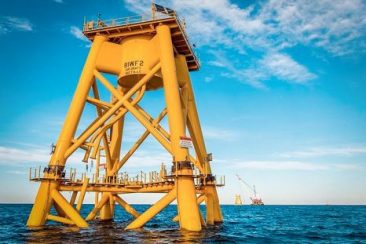 Jim Kendall painted the city’s streets with snow when he articulated how fishermen may feel about offshore wind during a meeting Wednesday that brought both sides together. As a child on SouthCoast, Kendall spent his snows days sledding on the streets. “You just can’t do stuff like that anymore,” he said. He’s seen the same influx in traffic on the ocean in his evolution from fisherman to fishermen representative for Vineyard Wind. Time has added stock limits, marine monuments and the latest is offshore wind. More traffic equates to more difficulty fishing. click here to read the story 11:08
Jim Kendall painted the city’s streets with snow when he articulated how fishermen may feel about offshore wind during a meeting Wednesday that brought both sides together. As a child on SouthCoast, Kendall spent his snows days sledding on the streets. “You just can’t do stuff like that anymore,” he said. He’s seen the same influx in traffic on the ocean in his evolution from fisherman to fishermen representative for Vineyard Wind. Time has added stock limits, marine monuments and the latest is offshore wind. More traffic equates to more difficulty fishing. click here to read the story 11:08
Congress Picks Sides on Trump Plan to Expand Offshore Drilling
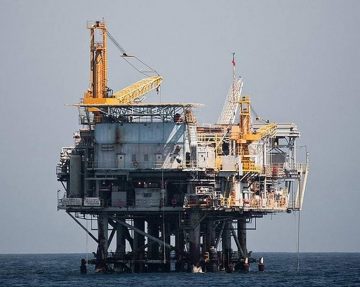 President Donald Trump’s plan to expand offshore oil drilling spurred dueling letters from members of Congress last week, 118 of whom say the plan is critical for U.S. energy security, while 69 others doubt it — plus nearly 18,000 letters of public comment, most of them opposing expanded drilling. Only 6 percent of the U.S. Outer Continental Shelf is available for leasing to oil and gas drillers from 2017 to 2022, under a drilling plan completed in the final days of President Barack Obama’s presidency. The shelf is 1.7 billion acres of submerged federal land from 3 nautical miles off the coastline, state-regulated waters, to 200 nautical miles out. click here to read the story 11:06
President Donald Trump’s plan to expand offshore oil drilling spurred dueling letters from members of Congress last week, 118 of whom say the plan is critical for U.S. energy security, while 69 others doubt it — plus nearly 18,000 letters of public comment, most of them opposing expanded drilling. Only 6 percent of the U.S. Outer Continental Shelf is available for leasing to oil and gas drillers from 2017 to 2022, under a drilling plan completed in the final days of President Barack Obama’s presidency. The shelf is 1.7 billion acres of submerged federal land from 3 nautical miles off the coastline, state-regulated waters, to 200 nautical miles out. click here to read the story 11:06
Christie gets it right on off-shore drilling, Virginia’s governor, not so much
![]() In an Aug. 16 letter to the Bureau of Ocean Energy Management, state Department of Environmental Protection Commissioner Bob Martin made clear the Christie administration does not support offshore drilling, rejecting the Trump administration’s commitment to expand off-shore energy exploration. click here to read the op-ed Then, there’s this. Virginia Opts Out of Offshore Lease Program –The Governor in the U.S. state of Virginia has changed his mind about offshore drilling.,,The letter says that with the Trump administration’s “reckless actions” regarding oil revenue-sharing with coastal states and the proposed cuts to funding for regulatory environmental agencies, “Virginia is left with only one option.” click here to read the story In Virginia, its all about the money. 12:52
In an Aug. 16 letter to the Bureau of Ocean Energy Management, state Department of Environmental Protection Commissioner Bob Martin made clear the Christie administration does not support offshore drilling, rejecting the Trump administration’s commitment to expand off-shore energy exploration. click here to read the op-ed Then, there’s this. Virginia Opts Out of Offshore Lease Program –The Governor in the U.S. state of Virginia has changed his mind about offshore drilling.,,The letter says that with the Trump administration’s “reckless actions” regarding oil revenue-sharing with coastal states and the proposed cuts to funding for regulatory environmental agencies, “Virginia is left with only one option.” click here to read the story In Virginia, its all about the money. 12:52
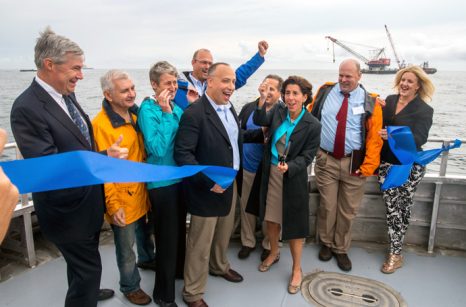
Central Coast should look to Rhode Island for bad experience with wind turbines
Our commercial fishermen met with the Bureau of Ocean Energy Management, and the bureau plans on putting hundreds of wind turbines off our coastline, taking hundreds of square miles of ocean away from fishing. We spoke with fishermen on the East Coast that had five wind turbines installed off Rhode Island, and they had nothing good to say. The installation required huge cement slabs on the bottom. The blades cause radar interference for miles. They are in squid and scallop fishing grounds, costing hundreds of jobs and millions of dollars lost to Rhode Island. They are placing them in navigation lanes, causing shipping vessels to travel around them. Also, most of the time they don’t work! They need repair constantly, and if the wind blows over 50 mph, they have to shut them down! They are being federally subsidized by millions of taxpayer dollars to mainly companies from other countries! It’s costing four times the amount it costs them for natural gas-powered electricity. Gov. Jerry Brown thinks using our oceans for energy is what we need. He is wrong. The ocean is a food source. It is wild and powerful and is not meant for industrialization. Tom Hafer, Atascadero link 09:19
Offshore drilling opponents re-gear for new round of battles
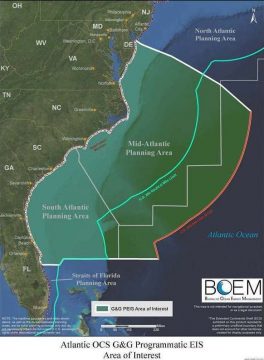 A little more than a month after seismic blast testing for oil and natural gas was stopped offshore of South Carolina, exploration companies are gearing up for a new try. A dozen anti-drilling advocates met Tuesday in Charleston to discuss expanding the opposition. They may look inland for more support in the vein of the massive coastal protest that in 2016 helped derail plans for testing and drilling. Frank Knapp, founder of the anti-drilling Business Alliance for Protecting the Atlantic Coast, said he has heard the exploration industry is planning to approach the federal Bureau of Ocean Energy Management about reversing a testing permit denial adopted during the last days of the Obama administration. Knapp’s group represents more than 35,000 businesses and 500,000 commercial fishing families from Maine to Florida. Continue reading the story here 17:58
A little more than a month after seismic blast testing for oil and natural gas was stopped offshore of South Carolina, exploration companies are gearing up for a new try. A dozen anti-drilling advocates met Tuesday in Charleston to discuss expanding the opposition. They may look inland for more support in the vein of the massive coastal protest that in 2016 helped derail plans for testing and drilling. Frank Knapp, founder of the anti-drilling Business Alliance for Protecting the Atlantic Coast, said he has heard the exploration industry is planning to approach the federal Bureau of Ocean Energy Management about reversing a testing permit denial adopted during the last days of the Obama administration. Knapp’s group represents more than 35,000 businesses and 500,000 commercial fishing families from Maine to Florida. Continue reading the story here 17:58
Study: Seismic Testing Disrupts Fish Behavior
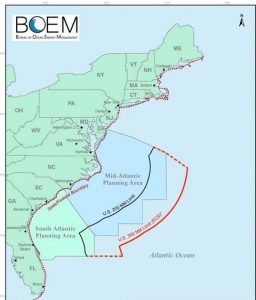 Almost anyone who’s thrown a hook in the water to catch a fish in a quiet atmosphere probably knows intuitively that loud noises spook them: you don’t scream at fish to bite, after all, you wait patiently. But intuition isn’t science, and seismic airguns don’t make just any loud noise, so when University of North Carolina Institute of Marine Sciences doctoral student Avery Paxton and some colleagues got the opportunity to do some real science on an issue that’s germane to the hot topic of oil and gas exploration by seismic surveys, they jumped at the chance. What they found, back in September 2014 when they did a study during a U.S. Geological Survey seismic mapping effort in the Atlantic Ocean off Beaufort Inlet, not only confirmed intuition, but surprised them in its degree: 78 percent of the fish on a reef near the seismic survey “went missing,” compared to counts at the same time the three previous days during the evening hours, the peak time for fish, such as snapper, grouper and angelfish, to gather there. Continue reading the article here 10:27
Almost anyone who’s thrown a hook in the water to catch a fish in a quiet atmosphere probably knows intuitively that loud noises spook them: you don’t scream at fish to bite, after all, you wait patiently. But intuition isn’t science, and seismic airguns don’t make just any loud noise, so when University of North Carolina Institute of Marine Sciences doctoral student Avery Paxton and some colleagues got the opportunity to do some real science on an issue that’s germane to the hot topic of oil and gas exploration by seismic surveys, they jumped at the chance. What they found, back in September 2014 when they did a study during a U.S. Geological Survey seismic mapping effort in the Atlantic Ocean off Beaufort Inlet, not only confirmed intuition, but surprised them in its degree: 78 percent of the fish on a reef near the seismic survey “went missing,” compared to counts at the same time the three previous days during the evening hours, the peak time for fish, such as snapper, grouper and angelfish, to gather there. Continue reading the article here 10:27
Decision on preliminary injunction on offshore sale in ‘coming days’
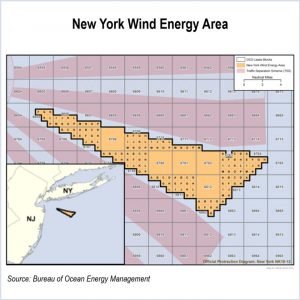 A US court is expected to issue a ruling in the coming days on a lawsuit seeking a preliminary injunction against the development of the up to 1GW New York offshore wind farm lease area. The Fisheries Survival Fund (FSF), which represents the majority of the limited access Atlantic scallop fleet, is the lead plaintiff in the lawsuit that alleges the Bureau of Ocean Energy Management (BOEM) leasing process did not adequately consider the impact of wind power development on the region’s fishermen. The plaintiffs, which also include the Garden State Seafood Association and the Long Island Commercial Fishing Association, argue that allowing the lease sale to go through would cause irreparable harm to commercial fishermen. Norwegian oil major Statoil won the December auction for the right to develop the 32,000-hectare site off the coast of Long Island with a bid of $42.5m. BOEM has delayed execution of the lease until the court has ruled on the preliminary injunction. Link 09:33
A US court is expected to issue a ruling in the coming days on a lawsuit seeking a preliminary injunction against the development of the up to 1GW New York offshore wind farm lease area. The Fisheries Survival Fund (FSF), which represents the majority of the limited access Atlantic scallop fleet, is the lead plaintiff in the lawsuit that alleges the Bureau of Ocean Energy Management (BOEM) leasing process did not adequately consider the impact of wind power development on the region’s fishermen. The plaintiffs, which also include the Garden State Seafood Association and the Long Island Commercial Fishing Association, argue that allowing the lease sale to go through would cause irreparable harm to commercial fishermen. Norwegian oil major Statoil won the December auction for the right to develop the 32,000-hectare site off the coast of Long Island with a bid of $42.5m. BOEM has delayed execution of the lease until the court has ruled on the preliminary injunction. Link 09:33
Statoil: Fishermen lobby for new spot for proposed Long Island wind farm
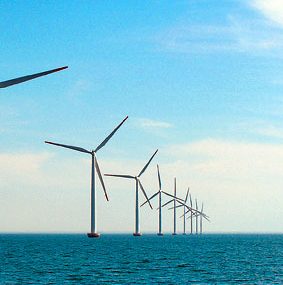 In Joe Gilbert’s view, fishermen like him shouldn’t have to compete with wind farms for a piece of the ocean. “We’re not anti-wind farm,” Gilbert said this past week. “But we don’t want to trade one renewable resource — fish — for another one — wind. They can both exist.” Gilbert is the owner of Empire Fisheries, which has four scallop and squid fishing boats based at the Town Dock. He’s also a member of the board of the Fisheries Survival Fund, one of 12 fishermen groups from New England to New Jersey opposing the federal government’s recent approval of a provisional lease to a Norwegian company that proposes to develop a wind farm on 79,350 acres of ocean bottom about 13 miles south of Jones Beach in Hempstead, Long Island. “What we’re asking is that it be relocated,” said Meghan Lapp, fisheries liaison with Sea Freeze, a squid wholesaler based in North Kingstown, R.I., that has joined the Fisheries Survival Fund in challenging the wind farm plan. The site of the proposed wind farm, fishermen say, is one of the most productive squid and scallop fishing areas in the North Atlantic. But the long trawling nets used by these fisheries could not maneuver within a “pinball machine of structures” that would constitute the wind farm, Lapp said. “It would be too dangerous.” Read the story here 09:01
In Joe Gilbert’s view, fishermen like him shouldn’t have to compete with wind farms for a piece of the ocean. “We’re not anti-wind farm,” Gilbert said this past week. “But we don’t want to trade one renewable resource — fish — for another one — wind. They can both exist.” Gilbert is the owner of Empire Fisheries, which has four scallop and squid fishing boats based at the Town Dock. He’s also a member of the board of the Fisheries Survival Fund, one of 12 fishermen groups from New England to New Jersey opposing the federal government’s recent approval of a provisional lease to a Norwegian company that proposes to develop a wind farm on 79,350 acres of ocean bottom about 13 miles south of Jones Beach in Hempstead, Long Island. “What we’re asking is that it be relocated,” said Meghan Lapp, fisheries liaison with Sea Freeze, a squid wholesaler based in North Kingstown, R.I., that has joined the Fisheries Survival Fund in challenging the wind farm plan. The site of the proposed wind farm, fishermen say, is one of the most productive squid and scallop fishing areas in the North Atlantic. But the long trawling nets used by these fisheries could not maneuver within a “pinball machine of structures” that would constitute the wind farm, Lapp said. “It would be too dangerous.” Read the story here 09:01
Feds Take Controversial Mid and South Atlantic Seismic Air Gun Testing Off Table
 Federal officials announced on Friday a controversial plan to allow dangerous seismic air gun testing in a vast section off the mid-Atlantic coast including an area as close as 20 miles off the coast of Ocean City has been removed from consideration. With a proposal to lease a vast area totaling roughly three million acres off the mid-Atlantic coast to offshore drilling for oil and natural gas reserves already taken off the table last spring, the federal Bureau of Ocean Energy Management (BOEM) announced on Friday a companion plan to open the same area to seismic airgun testing has been denied. Seismic airgun testing is used to determine what oil and natural gas reserves lie beneath the ocean floor. However, once the plan to allow offshore drilling off the mid-Atlantic coast was removed from consideration, at least for the next five years, BOEM officials determined there was no good reason to allow potentially dangerous seismic testing in the same areas off the mid-Atlantic coast including Ocean City and Assateague, for example. Read the story here 10:12
Federal officials announced on Friday a controversial plan to allow dangerous seismic air gun testing in a vast section off the mid-Atlantic coast including an area as close as 20 miles off the coast of Ocean City has been removed from consideration. With a proposal to lease a vast area totaling roughly three million acres off the mid-Atlantic coast to offshore drilling for oil and natural gas reserves already taken off the table last spring, the federal Bureau of Ocean Energy Management (BOEM) announced on Friday a companion plan to open the same area to seismic airgun testing has been denied. Seismic airgun testing is used to determine what oil and natural gas reserves lie beneath the ocean floor. However, once the plan to allow offshore drilling off the mid-Atlantic coast was removed from consideration, at least for the next five years, BOEM officials determined there was no good reason to allow potentially dangerous seismic testing in the same areas off the mid-Atlantic coast including Ocean City and Assateague, for example. Read the story here 10:12
Statoil Wins Offshore Wind Lease in NY for cheap money
 With Statoil being the provisional victor, the Norwegian giant said it will now have the opportunity to explore the potential development of an offshore wind farm to provide New York City and Long Island with a significant, long-term source of renewable electricity. Statoil Winds U.S. LLC bid almost $42.5 million for the rights to almost 80,000 acres of water beginning 12 miles from the coast. Statoil subsidiary Statoil Wind US LLC must pass federal agency reviews before it can open a one-year preliminary lease – and a hearing in U.S. District Court, where a February 8 date has been set to hear commercial fishermen’s motion for an injunction against the lease. The auction covered 79,350 acres of ocean real estate – roughly 127 square miles – between the southern Long Island and northern New Jersey coasts, and as the saying goes, things accelerated fast: Statoil Wind’s winning bid of $42.46 million was a far cry from the $158,700 (roughly $2 per acre) opening bid required by the Interior Department’s Bureau of Ocean Energy Management. Read the rest here 08:27
With Statoil being the provisional victor, the Norwegian giant said it will now have the opportunity to explore the potential development of an offshore wind farm to provide New York City and Long Island with a significant, long-term source of renewable electricity. Statoil Winds U.S. LLC bid almost $42.5 million for the rights to almost 80,000 acres of water beginning 12 miles from the coast. Statoil subsidiary Statoil Wind US LLC must pass federal agency reviews before it can open a one-year preliminary lease – and a hearing in U.S. District Court, where a February 8 date has been set to hear commercial fishermen’s motion for an injunction against the lease. The auction covered 79,350 acres of ocean real estate – roughly 127 square miles – between the southern Long Island and northern New Jersey coasts, and as the saying goes, things accelerated fast: Statoil Wind’s winning bid of $42.46 million was a far cry from the $158,700 (roughly $2 per acre) opening bid required by the Interior Department’s Bureau of Ocean Energy Management. Read the rest here 08:27
Alternative Energy Collides With Fishermen’s Livelihood Off Long Island
 The federal government on Thursday plans to auction off a parcel of 79,000 acres in the Atlantic Ocean just south of Long Island to build a wind farm over fishing grounds that scallop and squid fishermen say are vital to their trade. Bidders hope to secure a 25-year lease to operate a wind farm, to sell the electricity to energy-hungry Long Island and the New York City region. Offshore wind is a big part of Governor Andrew Cuomo’s plan for New York to get half of its energy from alternative sources by 2030. But the commercial fishing industry opposes building wind turbines on this particular stretch of the Atlantic Ocean, which is sandwiched between shipping lanes into and out of the New York harbor. “We are very afraid we are going to lock up an area of the bottom that is definitely favorable for scallop settlement,” said James Gutowski, a scallop fisherman from Barnegat Light, N.J., and chairman of the Fisheries Survival Fund. Members of the fishing industry say the Bureau of Ocean Energy Management didn’t adequately consider what the impact would have on scallop and squid fishing grounds. Read the story here 08:24
The federal government on Thursday plans to auction off a parcel of 79,000 acres in the Atlantic Ocean just south of Long Island to build a wind farm over fishing grounds that scallop and squid fishermen say are vital to their trade. Bidders hope to secure a 25-year lease to operate a wind farm, to sell the electricity to energy-hungry Long Island and the New York City region. Offshore wind is a big part of Governor Andrew Cuomo’s plan for New York to get half of its energy from alternative sources by 2030. But the commercial fishing industry opposes building wind turbines on this particular stretch of the Atlantic Ocean, which is sandwiched between shipping lanes into and out of the New York harbor. “We are very afraid we are going to lock up an area of the bottom that is definitely favorable for scallop settlement,” said James Gutowski, a scallop fisherman from Barnegat Light, N.J., and chairman of the Fisheries Survival Fund. Members of the fishing industry say the Bureau of Ocean Energy Management didn’t adequately consider what the impact would have on scallop and squid fishing grounds. Read the story here 08:24
Proposed Atlantic wind energy lease auction to proceed
 The federal government’s plan to auction the development rights to a huge offshore windfarm in the Atlantic Ocean between New York and New Jersey will proceed Thursday. Groups representing the fishing industry in four states sought to delay the auction. But an agreement between the groups and the Bureau of Ocean Energy Management will allow it to proceed. A lawyer for the fishing groups says they still will be able to seek a halt to the final sale during a federal court proceeding now scheduled for Feb. 8, 2017. Andrew Minkiewicz says the delay gives both sides more time to submit documents. A judge in Washington, D.C., agreed to the plan Monday. The groups, including scallop fishermen, claim the 127-square-mile project would harm their business. link 20:20
The federal government’s plan to auction the development rights to a huge offshore windfarm in the Atlantic Ocean between New York and New Jersey will proceed Thursday. Groups representing the fishing industry in four states sought to delay the auction. But an agreement between the groups and the Bureau of Ocean Energy Management will allow it to proceed. A lawyer for the fishing groups says they still will be able to seek a halt to the final sale during a federal court proceeding now scheduled for Feb. 8, 2017. Andrew Minkiewicz says the delay gives both sides more time to submit documents. A judge in Washington, D.C., agreed to the plan Monday. The groups, including scallop fishermen, claim the 127-square-mile project would harm their business. link 20:20
Jewell Announces Offshore Oil and Gas Leasing Plan for 2017-2022
 After considering more than 3.3 million public comments and holding 36 public meetings, U.S. Secretary of the Interior Sally Jewell and Bureau of Ocean Energy Management (BOEM) Director Abigail Hopper today released the final plan to guide future energy development for the Nation’s Outer Continental Shelf (OCS) for 2017-2022. The plan takes a balanced approach to best meet the nation’s energy needs by including areas offshore with high resource potential and mature infrastructure while protecting regions with critical ecological resources. The Proposed Final Program offers 11 potential lease sales in four planning areas – 10 sales in the portions of three Gulf of Mexico Program Areas that are not under moratorium and one sale off the coast of Alaska in the Cook Inlet Program Area.Areas off the Atlantic coast are not included in this program. After an extensive public input process, the lease sale that was proposed in the Draft Proposed Program in the Mid- and South Atlantic area was removed during the earlier Proposed Program stage of the process due to current market dynamics, strong local opposition and conflicts with competing commercial and military ocean uses. Read the press release here 16:32
After considering more than 3.3 million public comments and holding 36 public meetings, U.S. Secretary of the Interior Sally Jewell and Bureau of Ocean Energy Management (BOEM) Director Abigail Hopper today released the final plan to guide future energy development for the Nation’s Outer Continental Shelf (OCS) for 2017-2022. The plan takes a balanced approach to best meet the nation’s energy needs by including areas offshore with high resource potential and mature infrastructure while protecting regions with critical ecological resources. The Proposed Final Program offers 11 potential lease sales in four planning areas – 10 sales in the portions of three Gulf of Mexico Program Areas that are not under moratorium and one sale off the coast of Alaska in the Cook Inlet Program Area.Areas off the Atlantic coast are not included in this program. After an extensive public input process, the lease sale that was proposed in the Draft Proposed Program in the Mid- and South Atlantic area was removed during the earlier Proposed Program stage of the process due to current market dynamics, strong local opposition and conflicts with competing commercial and military ocean uses. Read the press release here 16:32
U.S. to Auction 79,000 Acres Offshore New York for Wind Energy
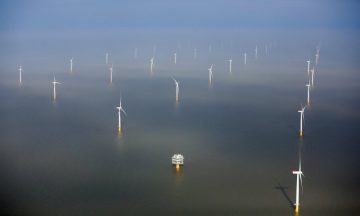 The United States Department of the Interior and the Bureau of Ocean Energy Management (BOEM) announced that 79,350 acres offshore New York will be offered in a December 15 commercial wind lease sale. The New York Wind Energy Area starts approximately 11.5 nautical miles from Jones Beach, New York, on Long Island. From its western edge, the area extends approximately 24 miles southeast at its longest portion. The lease area consists of five full Outer Continental Shelf blocks and 143 sub-blocks. After reviewing comments received on the environmental assessment, BOEM removed about 1,780 acres from the lease area due to environmental concerns regarding a seafloor feature known as the Cholera Bank. In a comment letter, the National Marine Fisheries Service identified the Cholera Bank feature as a sensitive habitat to be avoided for the placement of structures. As a result of this removal, the revised lease area will be approximately two percent smaller than the lease area considered in the proposed sale notice. In response to concerns raised by commercial fishing interests, BOEM also has included a lease requirement for the lessee to develop a publicly available fisheries communications plan and work with a fisheries liaison to facilitate communication with the fishing industry. Read the rest here 16:09
The United States Department of the Interior and the Bureau of Ocean Energy Management (BOEM) announced that 79,350 acres offshore New York will be offered in a December 15 commercial wind lease sale. The New York Wind Energy Area starts approximately 11.5 nautical miles from Jones Beach, New York, on Long Island. From its western edge, the area extends approximately 24 miles southeast at its longest portion. The lease area consists of five full Outer Continental Shelf blocks and 143 sub-blocks. After reviewing comments received on the environmental assessment, BOEM removed about 1,780 acres from the lease area due to environmental concerns regarding a seafloor feature known as the Cholera Bank. In a comment letter, the National Marine Fisheries Service identified the Cholera Bank feature as a sensitive habitat to be avoided for the placement of structures. As a result of this removal, the revised lease area will be approximately two percent smaller than the lease area considered in the proposed sale notice. In response to concerns raised by commercial fishing interests, BOEM also has included a lease requirement for the lessee to develop a publicly available fisheries communications plan and work with a fisheries liaison to facilitate communication with the fishing industry. Read the rest here 16:09
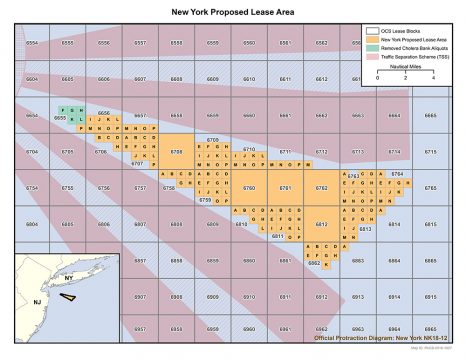
Department of the Interior to auction over 79,000 acres offshore New York for wind development
U.S. Department of the Interior (DOI) Secretary of the Interior Sally Jewell and the Bureau of Ocean Energy Management (BOEM) Director Abigail Ross Hopper announced that 79,350 acres offshore New York will be offered in a December 15 commercial wind-lease sale. The New York Wind Energy Area starts approximately 11.5 nautical miles (nm) from Jones Beach, NY. From its western edge, the area extends approximately 24 nm southeast at its longest portion. The lease area consists of five full Outer Continental Shelf blocks and 143 sub-blocks. After reviewing comments received on the Environmental Assessment, BOEM removed about 1,780 acres from the lease area due to environmental concerns regarding a seafloor feature known as the Cholera Bank. In a comment letter, the National Marine Fisheries Service identified the Cholera Bank feature as a sensitive habitat to be avoided for the placement of structures. As a result of this removal, the revised lease area will be approximately two percent smaller than the lease area considered in the Proposed Sale Notice. Read the rest here 13:55
N.J. fishermen fear loss of huge underwater sand hill, the Manasquan Ridge
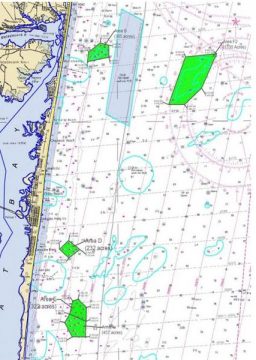 The appearance of the 123-foot offshore supply vessel Scarlett Isabella on the Manasquan Ridge is a bad omen to Capt. Jim Lovgren, a Point Pleasant Beach commercial fishermen. The Scarlett was in the hire of the Bureau of Ocean Energy Management, which is looking for potential sand on the outer continental shelf that could be pumped up onto the Jersey beach. Tampering with these sand beds, which are long-established fishing areas, could reshape the fishing communities at the Shore, fishermen say. The ridge, which starts to rise off the ocean floor 5 ½ miles southeast of Manasquan Inlet, is one of those potential resources of sand. “Last year word was that Manasquan Ridge was a last resort for beach replenishment use. The fact that they are paying a survey vessel to crisscross it clearly says something different,” said Lovgren, who sits on the Executive Board of the Garden State Seafood Association. Fishermen have been weary of a conflict with the Army Corps of Engineers over the ridge, and others nearby, which they depend on to hold fish. Read the story here 17:48
The appearance of the 123-foot offshore supply vessel Scarlett Isabella on the Manasquan Ridge is a bad omen to Capt. Jim Lovgren, a Point Pleasant Beach commercial fishermen. The Scarlett was in the hire of the Bureau of Ocean Energy Management, which is looking for potential sand on the outer continental shelf that could be pumped up onto the Jersey beach. Tampering with these sand beds, which are long-established fishing areas, could reshape the fishing communities at the Shore, fishermen say. The ridge, which starts to rise off the ocean floor 5 ½ miles southeast of Manasquan Inlet, is one of those potential resources of sand. “Last year word was that Manasquan Ridge was a last resort for beach replenishment use. The fact that they are paying a survey vessel to crisscross it clearly says something different,” said Lovgren, who sits on the Executive Board of the Garden State Seafood Association. Fishermen have been weary of a conflict with the Army Corps of Engineers over the ridge, and others nearby, which they depend on to hold fish. Read the story here 17:48
BP spill cost fishing industry at least $94.7 million to $1.6 billion from May through December 2010
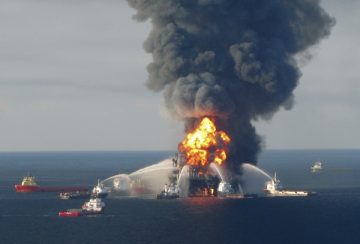 The BP oil spill may have cost the Gulf of Mexico’s commercial fishing industry between $94.7 million and $1.6 billion and between 740 and 9,315 jobs from May to December 2010, according a study released Wednesday (June 22) by the Bureau of Ocean Energy Management. The study, conducted by The Vertex Companies of Boston, Mass., measured the impact of the spill during the same period of time that is being used to calculate claims being paid to fishermen under a 2012 court-approved settlement agreement between private parties and BP. The three-year study cost $355,888. Louisiana’s commercial fishing industry bore the brunt of the costs of the spill, compared to the four other Gulf states, the report found, with the highest costs affecting the catch of shrimp, oysters, crabs and menhaden. Read the rest here 10:34
The BP oil spill may have cost the Gulf of Mexico’s commercial fishing industry between $94.7 million and $1.6 billion and between 740 and 9,315 jobs from May to December 2010, according a study released Wednesday (June 22) by the Bureau of Ocean Energy Management. The study, conducted by The Vertex Companies of Boston, Mass., measured the impact of the spill during the same period of time that is being used to calculate claims being paid to fishermen under a 2012 court-approved settlement agreement between private parties and BP. The three-year study cost $355,888. Louisiana’s commercial fishing industry bore the brunt of the costs of the spill, compared to the four other Gulf states, the report found, with the highest costs affecting the catch of shrimp, oysters, crabs and menhaden. Read the rest here 10:34






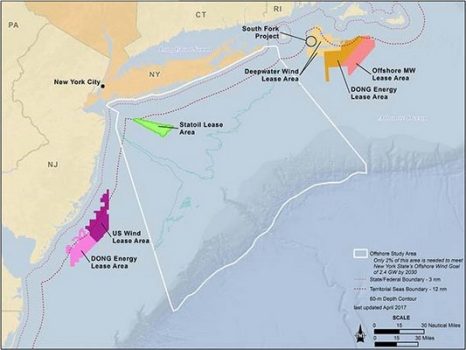
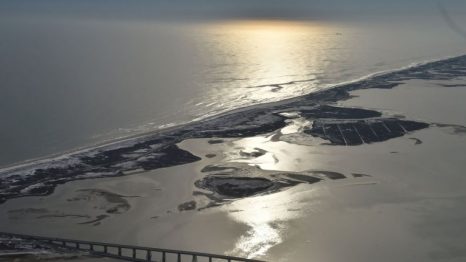
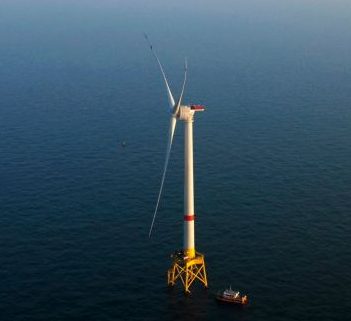 The lease rights to develop a wind-energy farm on 79,350 acres of ocean 11.5 miles from Jones Beach could be granted by federal regulators this week. But the online bidding is only the start of a process that could take seven years or more, officials said. The federal Bureau of Ocean Energy Management, a division of the Department of the Interior created by President Obama in 2010 to facilitate energy independence and accelerate wind-energy efforts, has said it will start the Thursday auction with an opening bid of $158,700, or around $2 per acre. The long-awaited path to that auction had seemed clear until fishing groups, including the largest commercial fishing association on Long Island, filed suit on Thursday seeking to block it, alleging the project of 194 turbines would hinder access to vital fishing grounds. A hearing on a request for a temporary restraining order and injunction has been scheduled for Dec. 14, a day before the auction, before U.S. District Court Judge Tanya S. Chutkan. But attorneys for both sides appear to have worked out an agreement that would let the auction go forward but give fishing groups 14 days’ notice before any final lease is executed. It awaits a judge’s approval.
The lease rights to develop a wind-energy farm on 79,350 acres of ocean 11.5 miles from Jones Beach could be granted by federal regulators this week. But the online bidding is only the start of a process that could take seven years or more, officials said. The federal Bureau of Ocean Energy Management, a division of the Department of the Interior created by President Obama in 2010 to facilitate energy independence and accelerate wind-energy efforts, has said it will start the Thursday auction with an opening bid of $158,700, or around $2 per acre. The long-awaited path to that auction had seemed clear until fishing groups, including the largest commercial fishing association on Long Island, filed suit on Thursday seeking to block it, alleging the project of 194 turbines would hinder access to vital fishing grounds. A hearing on a request for a temporary restraining order and injunction has been scheduled for Dec. 14, a day before the auction, before U.S. District Court Judge Tanya S. Chutkan. But attorneys for both sides appear to have worked out an agreement that would let the auction go forward but give fishing groups 14 days’ notice before any final lease is executed. It awaits a judge’s approval. 


























